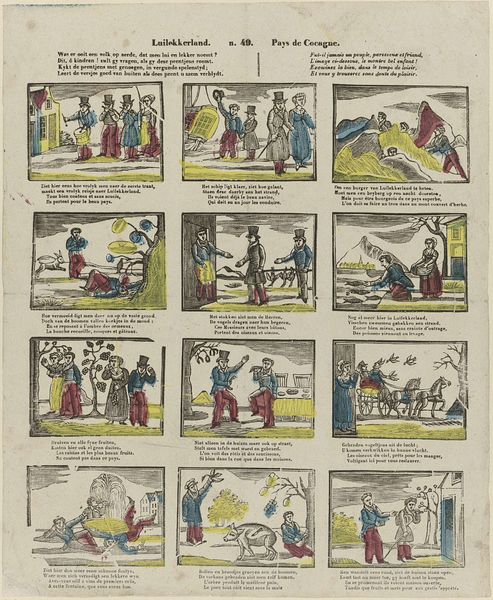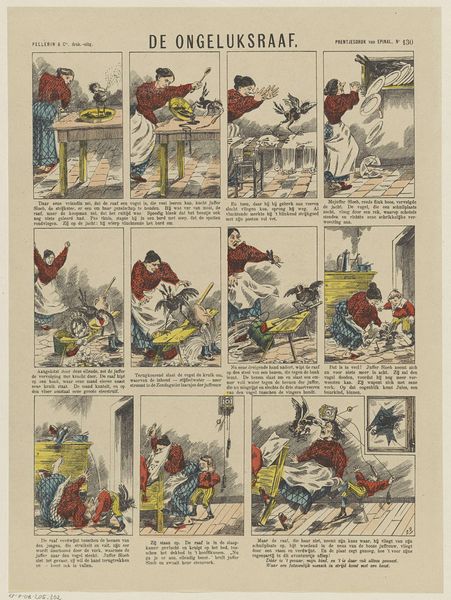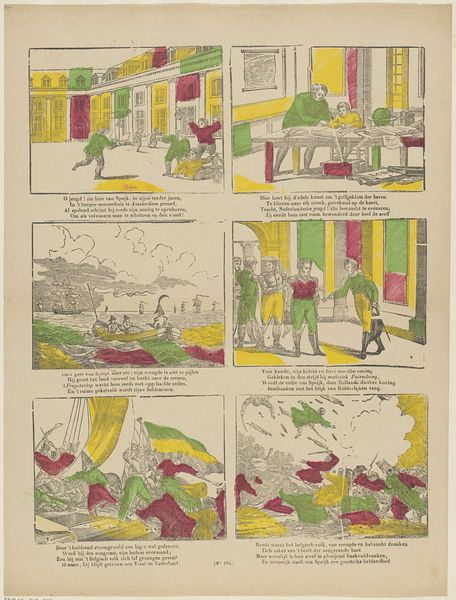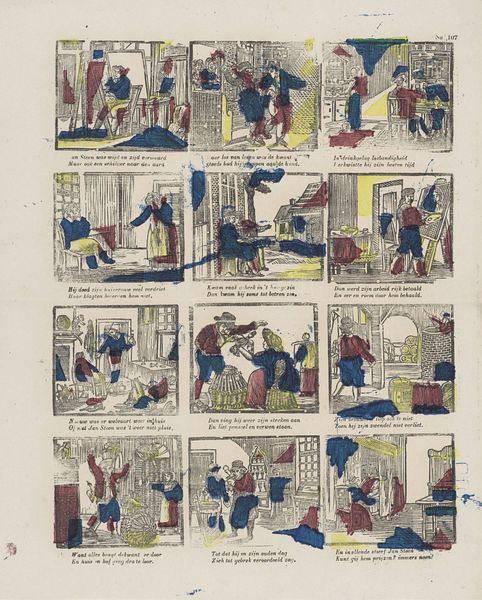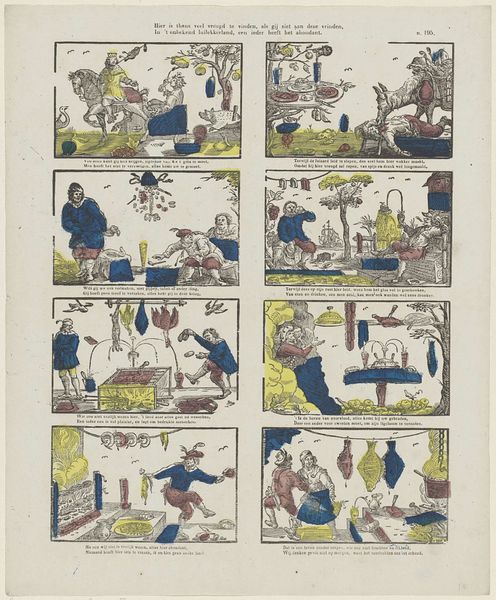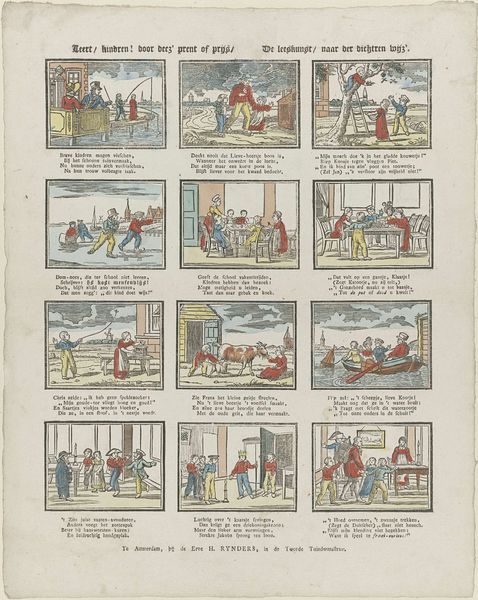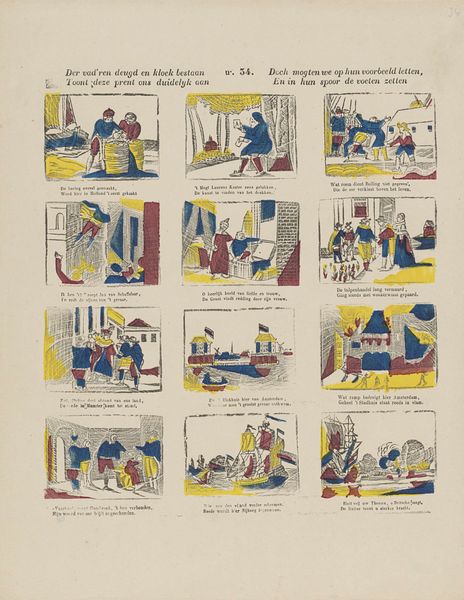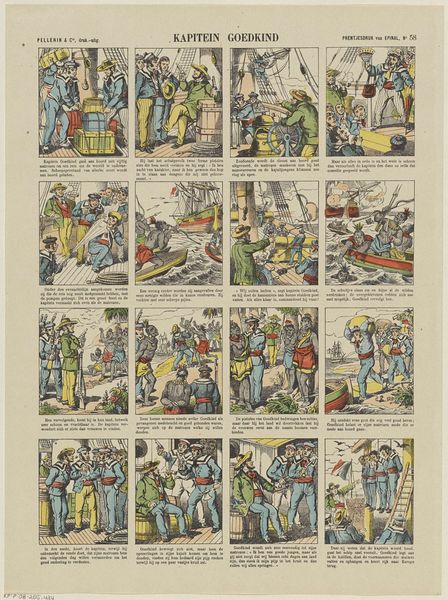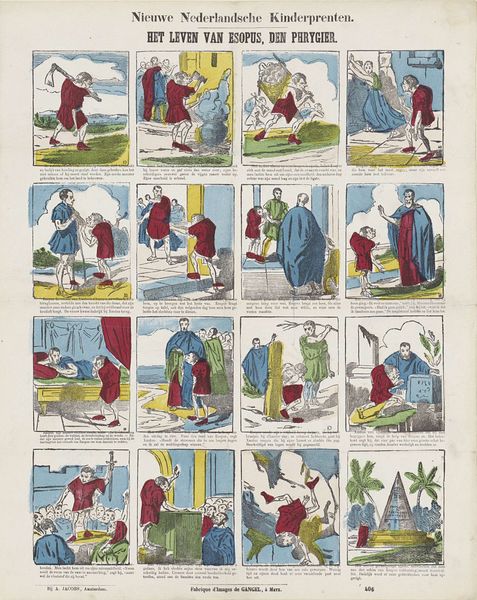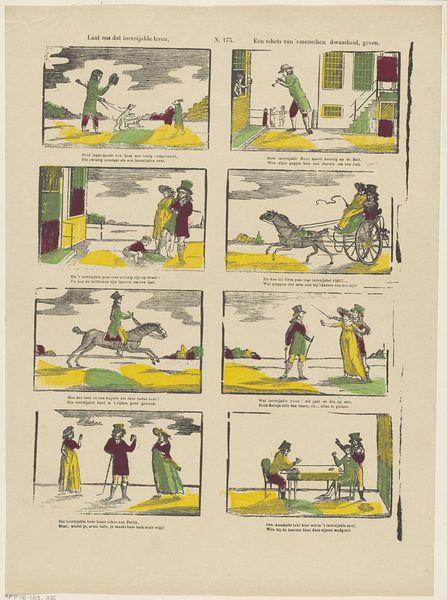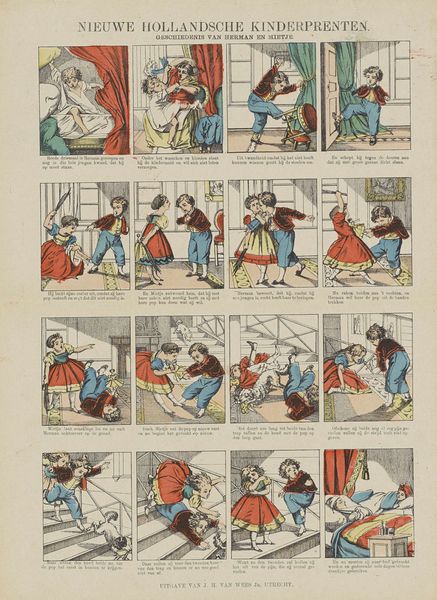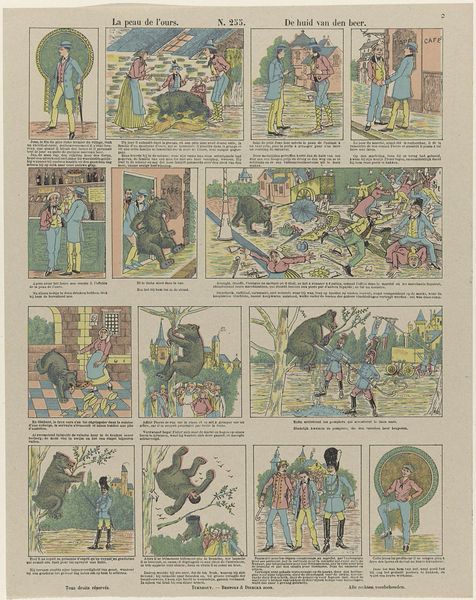
lithograph, print
#
narrative-art
#
lithograph
# print
#
comic
#
genre-painting
#
history-painting
Dimensions: height 399 mm, width 334 mm
Copyright: Rijks Museum: Open Domain
Editor: This lithograph, titled "Leven van Van Speijk" and created sometime between 1833 and 1856 by Alexander Cranendoncq, is a really interesting example of narrative art; almost like a comic strip telling a story. I'm curious, what’s your interpretation of the different scenes? Curator: Well, the comic strip style, as you pointed out, is key. It presents a very specific, carefully constructed narrative. Considering the time period, how do you think the story it tells might relate to the broader social and political context of the Netherlands in the mid-19th century? Editor: I imagine it’s a patriotic tale, but I’m not familiar with Van Speijk. The scenes seem to depict key moments in his life, judging from the action and emotion on display. The last one appears to be some form of explosion, right? Curator: Precisely. The final scene depicts Van Speijk's dramatic death, when he blew up his own ship to avoid capture. Now, knowing that, think about why this particular story, and its representation, would be compelling. Who is the intended audience, and what message might Cranendoncq be trying to convey to them about Dutch identity or heroism? Does this artwork reinforce dominant narratives? Editor: It's interesting to consider it in light of Dutch identity at that time. The choice to portray this particular event in such a visual, accessible format, like a comic strip, feels very deliberate in shaping public memory and promoting a certain kind of patriotic feeling. Especially the dramatic ending! Curator: Exactly. The print participates in the creation and reinforcement of national myths and heroic figures. Also, consider who benefits from the spread of these heroic ideals. Who is being valorized and whose story is potentially being erased? Editor: That's given me a lot to consider in relation to the way that the print uses visual language to construct ideas about the national past and the heroic narrative it presents, also pointing me toward understanding those narratives' role and influence within the time it was created. Curator: Yes, analyzing these historical contexts helps reveal the complicated web of historical events, societal values, and the artist's individual perspective and position in their moment in time.
Comments
No comments
Be the first to comment and join the conversation on the ultimate creative platform.

